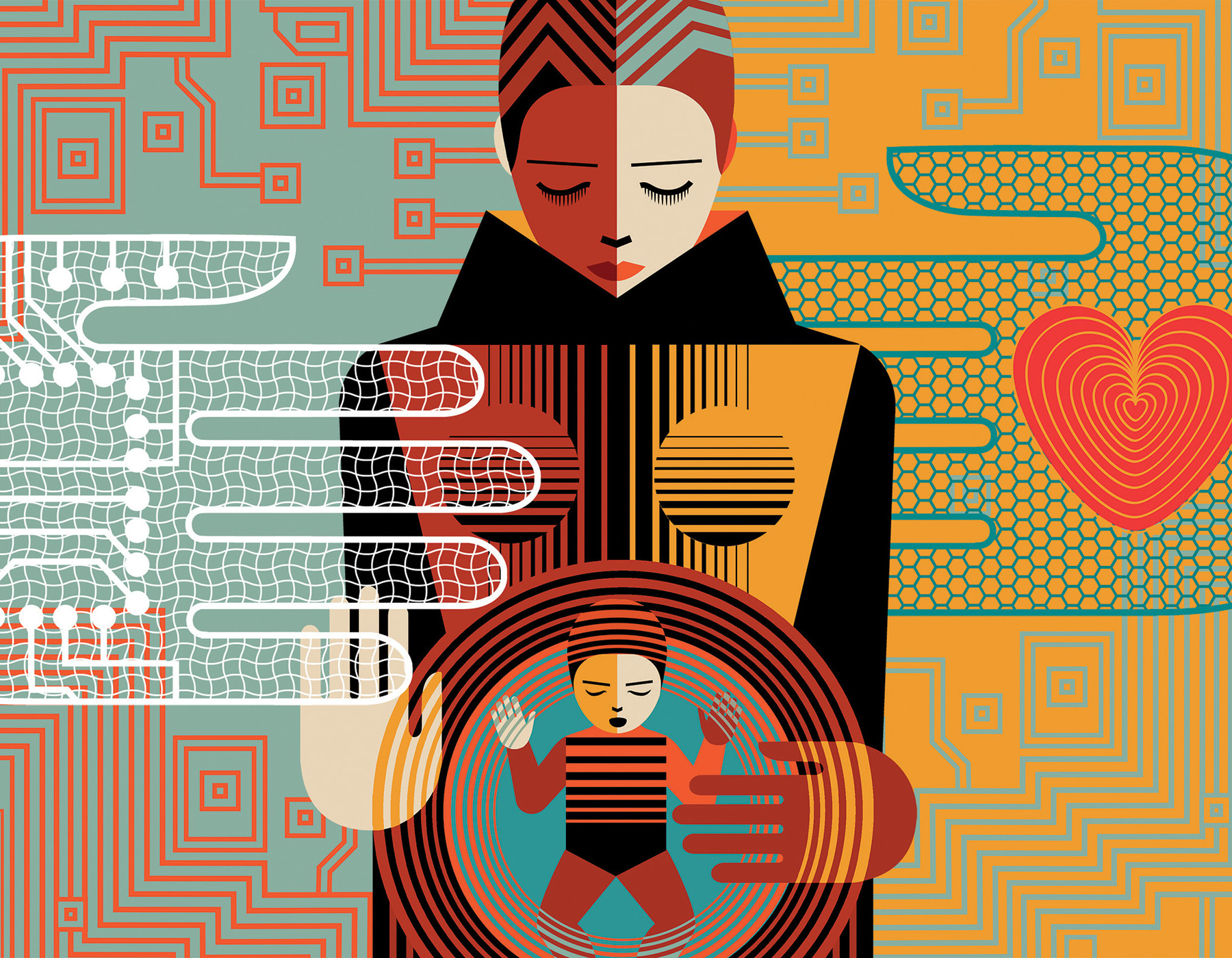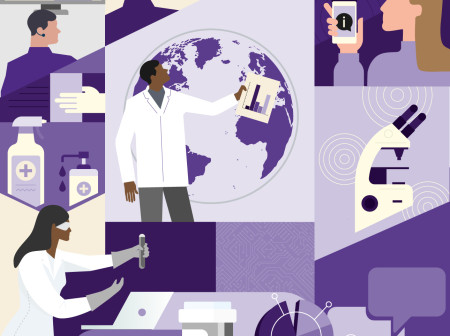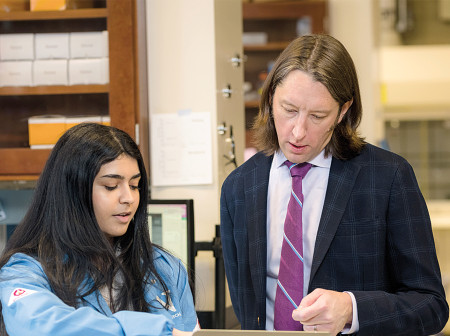Improved Autism Diagnoses
When compared with neurotypical individuals, people with autism often show differences in “prosodic features” of speech, such as rhythm, intonation and pitch. Northwestern researchers are leveraging AI to better understand those differences and use that information to diagnose autism in people more accurately and at an earlier age.
“As early as the first delineation of autism in the 1940s, there were already reports of prosodic features being different in people with autism,” says Molly Losh, the Jo Ann G. and Peter F. Dolle Professor of Learning Disabilities at the School of Communication. “But 80 years later we still know very little about the nuances and origins of these prosodic differences. In particular, it’s quite hard to measure the differences scientifically, despite how apparent they may sound even to untrained ears.”
In collaboration with researchers at the Chinese University of Hong Kong, Losh’s team, including research assistant professor Joseph Lau, conducted a study comparing the speech patterns of English- and Cantonese-speaking young people, both with and without autism. The study focused on intonation, which is the way pitch is used in a sentence to convey different meanings, and rhythm, which refers to the articulation and intensity pattern of words and syllables.
Study participants were asked to tell a story from the wordless children’s picture book Frog, Where Are You?. Using unsupervised machine learning (where AI finds patterns in unlabeled or ungrouped data), the research team sought to determine whether the AI could differentiate participants with autism from participants without.
Across both languages, researchers found that differences in rhythm, but not intonation, were associated with an autism diagnosis. This suggests that rhythmic changes in autism may be more biologically or even genetically based.
The discovery that changes in rhythm are a hallmark of autism across languages “suggests those differences are more hardwired.” That’s meaningful for biological and genetic studies of autism, Losh says. “That’s a huge area of research for us.”
Because autism shows great variability across patients, Losh says the use of machine learning in autism research presents unique opportunities for a field that until now has relied heavily on in-depth interviews and researchers’ hand-coding of patient responses, both of which are time-intensive. Incorporating AI into this research could enable faster, more streamlined diagnoses of autism.
“Across prosodic speech features, some people with autism show sing-songy patterns while others might be monotone, and others might have completely different speech patterns,” Losh says. “Machine learning has the potential to pull out those fine-tuned differences and really help us understand them.”
That understanding, Losh says, will advance both biological study and clinical care and support for those with autism.
Artificial intelligence has allowed Alshurafa, Jacobs, Shah, Argall, Kho, Losh and many others at Northwestern to probe deeper into their work in the hopes of advancing both research and patient care. And with continued investment in and exploration of AI, the researchers are confident that we will see even greater benefits to come.
“AI will absolutely transform most aspects of care in very positive ways,” says Kho. “Diagnoses will be much more precise and aligned with therapies, and we’ll see tailored medications based on AI.”
“We’re trying to make a difference in the lives of our patients,” Shah says of Northwestern’s focus on bringing AI to real-world patient applications.
“It’s exciting to come up with AI algorithms, but if they don’t change how we practice medicine or serve the health of our patients, what good are they? We focus on building AI that will improve patient care.”
Clare Milliken is senior writer and producer in Northwestern’s Office of Global Marketing and Communications.





Reader Responses
Wonderful to see how advanced NU has been incorporating and implementing AI into so MANY areas. I learn every day what a gamechanger AI is for business, institutions and humans in general. Great to see NU ahead of the crowd and forging a leadership oath in this powerful technology!
—Mark Gruber '97 CERT, Chicago, via Northwestern Magazine
No one has commented on this page yet.
Submit a Response